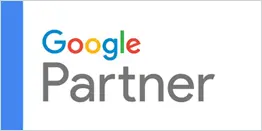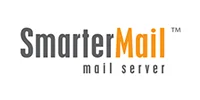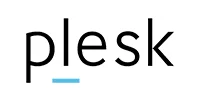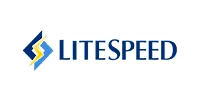Hosting services with real-time fast performance?

5 Strategies to Build Sales Funnels for the Healthcare Sector
Crafting Effective Sales Funnels for the Healthcare Sector: 5 Patient-Centric Strategies
The healthcare sector is vast and varied, yet despite its differences from other industries, the need to attract and retain customers – or, in this case, patients – remains constant. This is where sales funnels for the healthcare sector come into play. This demand also gave rise to the need for professional healthcare marketing in the medical sector. Marketers are investing in digital marketing, optimizing conversions and sales funnels.
Let’s dive into five strategies to help you effectively set up sales funnels for this unique sector. However, before that, let’s briefly overview sales funnels.
What is a sales funnel?
A sales funnel is a marketing (promotion) concept representing a potential customer’s journey before purchasing. It’s a visual representation of the various stages a buyer passes through, from initial awareness of a product/ service to the final conversion (purchase). For instance, the stages typically include Awareness, Interest, Consideration, Intent, Decision, and then Action.
Thus, sales funnels help businesses understand the customer journey and optimize their marketing efforts at each stage to increase conversions. Different strategies and tactics guide customers smoothly through the funnel, addressing their needs and concerns along the way.
Now, let’s start with the strategies to set up sales funnels for the healthcare sector.
1. Educate to Engage
The healthcare sector is uniquely challenging when it comes to communication. For many individuals, medical jargon can seem like a foreign language. However, a well-informed patient is more likely to trust a healthcare provider, make confident decisions about their health, and engage with medical services. So, how do you bridge the knowledge gap? The answer lies in the principle of ‘Educate to Engage.’ Moreover, this strategy is crucial when designing sales funnels for the medical sector.
Let’s delve deeper into this concept.
Why Education Matters
In the world of healthcare, a well-informed decision is often a life-altering one. For patients, understanding their conditions, the available treatments, and the potential outcomes can make all the difference in their health journey. Therefore, by offering precise and comprehensive information, healthcare providers foster trust and empower patients.
Content Creation: Simplifying the Complex
To effectively educate, you need to start by simplifying complex medical terminologies. Consider creating:
- Articles: Write blog posts that explain common health issues in layperson’s terms. For instance, instead of discussing “cardiovascular diseases,” you might write about “heart health and how to keep it strong.”
- Videos: Creating short videos for healthcare sector can explain a concept more quickly and engagingly than a long article. Additionally, Animated explainer videos are beneficial for breaking down complicated subjects.
Halfway through our exploration, it’s evident that building sales funnels for the healthcare sector demands a strong focus on education.
Interactive Webinars & Workshops
Webinars and workshops provide a platform for real-time interaction. Here, patients can:
- Ask Questions: This live interaction lets patients clarify doubts immediately, promoting a deeper understanding of the topic.
- Hear from Experts: Hosting guest doctors or medical experts can provide authoritative insights. It also helps further build your position as a trusted healthcare provider.
Feedback: The Loop of Continuous Learning
Education isn’t a one-way street. By collecting feedback on your educational materials, you can:
- Refine Content: Understand which topics resonate most with your audience and which areas need a more precise explanation.
- Identify Gaps: There might be health topics that your audience wants to know more about. However, feedback can illuminate these areas.
To Conclude
The ‘Educate to Engage’ strategy is invaluable in creating sales funnels for the healthcare sector. By providing clear, concise, and accessible information, healthcare providers can bridge the knowledge gap, empowering patients to make informed decisions. In doing so, they foster trust and pave the way for more meaningful patient-provider relationships.
2: Tailor the Experience: Crafting Personalized Healthcare Journeys
Unlike many other industries, the healthcare sector deeply intertwines with individual lives. Health is personal, often private, and invariably significant. Therefore, when considering sales funnels for the medical sector, the experience provided to potential patients should mirror the unique, personal nature of their health journeys. Medical marketing experts, given this trend, infuse more personalization in the marketing tactics and implementation. Here’s a closer look at the importance of tailoring the experience and how it can be achieved.
Understanding Individuality in Healthcare
Each patient comes with their needs, concerns, and histories. Moreover, recognizing this individuality is the first step towards offering a tailored experience. Whether it’s a young athlete looking for physiotherapy or an elderly individual seeking geriatric care, their search and requirements will vastly differ.
Segmentation: The Power of Precision
Incorporating segmentation into sales funnels for the healthcare sector can bring about more relevant and focused interactions.
- Age-based Segmentation: Different age groups have distinct health concerns. Tailoring content and services to address these can make your offerings more relevant. For instance, a teenager might be more interested in acne treatments, while an older adult might seek arthritis remedies.
- Health Condition Segmentation: You can provide targeted resources and solutions by grouping potential patients based on specific health conditions or concerns. Moreover, someone researching diabetes would benefit more from content about managing blood sugar levels than generic health tips.
At this point, we see the evident significance of personalizing sales funnels for the healthcare sector, ensuring that each individual feels seen and understood.
Personalized Follow-Ups: Beyond the First Interaction
Initial interactions are just the beginning. By leveraging CRM (Customer Relationship Management) systems:
- Timely Reminders: Automated reminders for follow-up appointments or check-ups ensure patients stay engaged and receive the care they need.
- Customized Content: Share articles, videos, or resources that directly relate to a patient’s previous interactions or expressed concerns, reinforcing the personalized nature of their experience.
Feedback and Adaptation: Keeping the Experience Relevant
Even with the most meticulous planning, there’s always room for improvement. Moreover, regular feedback from patients provides:
- Insight into Needs: Discovering what patients truly want and need allows for better tailoring in the future.
- Areas of Enhancement: Feedback can highlight where the experience might fall short, offering a chance to rectify and enhance the patient journey.
In Summation
The health journey is deeply personal. By tailoring the experience, healthcare providers can resonate more deeply with potential patients, ensuring they feel understood, valued, and cared for. Integrating such personalization into sales funnels for the healthcare sector isn’t just a strategy; it’s necessary for meaningful, lasting relationships.
3: Optimize Online Booking Systems: Streamlining Patient Access
In today’s digital age, the convenience of online interactions is not just a luxury but an expectation. However, this is especially true in the healthcare sector, where patients seek easy service access. Optimizing online booking systems is thus integral when crafting sales funnels for the medical sector. A streamlined booking process can elevate patient experience and ensure smoother operations. Let’s dive deeper into this pivotal aspect.
The Need for Seamless Navigation
No one wants to click through a maze of links and tabs, especially when trying to secure a medical appointment. Moreover, the ease with which patients can navigate your booking system directly impacts their overall experience.
- User-Friendly Design: An elegant website design with clear calls to action and minimal steps can significantly improve patient satisfaction. Simplicity is key.
- Mobile Optimization: With a significant portion of users accessing websites via mobile devices, ensuring your mobile-friendly booking system becomes imperative.
Halfway into our discussion, we see that an effective online booking system is central to creating sales funnels for the healthcare sector. Healthcare providers can take a significant step towards enhancing patient experience by ensuring easy navigation.
Real-Time Availability: No More Guesswork
There’s significant frustration in finding out that a chosen slot is no longer available. Real-time updates to slot availability can mitigate this.
- Instant Updates: As soon as an appointment slot is booked, it should immediately reflect as unavailable to other users. This prevents double-booking and reduces administrative hiccups.
- Waitlist Options: For high-demand slots or specialists, offering a waitlist option can keep potential patients engaged, allowing them to access the service should a slot open up.
Automated Confirmations and Reminders: Building Consistency
A well-optimized booking system goes beyond the initial appointment setting.
- Instant Confirmations: An automatic confirmation email or text reassures patients that their slot is secured once an appointment is booked.
- Scheduled Reminders: Automated reminders, sent a day or two before the appointment, can reduce no-show rates and ensure patients are adequately prepared for their visit.
Feedback Integration: Continuous Improvement
Like any other digital tool, online booking systems should evolve based on user feedback.
- Ease of Feedback Collection: Incorporate simple feedback forms or surveys post-booking to gather insights on user experience.
- Regular Updates: Implement feedback to refine the system consistently, ensuring it remains patient-centric.
To Wrap It Up
In healthcare, where timely access to services can be crucial, an optimized online booking system is a cornerstone. Moreover, by focusing on user experience, real-time updates, and consistent engagement, healthcare providers can significantly enhance their sales funnels for the healthcare sector. In doing so, they offer convenience and show patients that their time and peace of mind are valued.
4: Leverage Patient Testimonials: Amplifying Authentic Voices
In the realm of healthcare, the trust holds value. While medical credentials and facilities play their part in building credibility, nothing resonates more powerfully with potential patients than the words of their peers. Moreover, patient testimonials are genuine endorsements, offering insights into real experiences and outcomes. Integrating these testimonials becomes crucial when shaping sales funnels for the healthcare sector. Let’s delve into the multifaceted impact of patient testimonials and how best to leverage them.
The Authenticity Advantage
The power of patient testimonials lies in their authenticity. These are not scripted marketing pitches but heartfelt accounts of personal health journeys.
- Relatability: Potential patients can often see themselves in these stories, making the testimonial’s message more impactful.
- Building Credibility: A genuine account of a positive experience can foster patient trust faster than any professional accolade.
Weaving authentic voices into sales funnels for the healthcare sector enhances credibility and emphasizes empathy and patient-centric care.
Diverse Formats, Consistent Impact
The presentation of testimonials can vary, yet each format offers unique advantages.
- Video Testimonials are compelling as they capture verbal and non-verbal cues. Moreover, the sincerity in a patient’s voice, the gratitude in their eyes, or the relief in their demeanor can be moving and convincing.
- Written Testimonials: These are easily shared and seamlessly integrated into websites, newsletters, or brochures. Accompanying photos can add a personal touch to these written accounts.
As we further explore the topic, testimonials indeed play a central role in optimizing sales funnels for the healthcare sector, making the patient’s voice a driving force in attracting new patients.
Case Studies: The Detailed Journey
While brief testimonials offer snippets of experiences, case studies provide a more in-depth look.
- Comprehensive Insight: Case studies can detail a patient’s journey from the initial diagnosis to the outcome, highlighting the healthcare provider’s role at each step.
- Empirical Evidence: Alongside the narrative, case studies can also include data, charts, or before-and-after photos, offering both emotional and empirical evidence of success.
Integrating Feedback: A Two-Way Street
Beyond leveraging positive testimonials, it’s also essential to be receptive to constructive feedback.
- Improvement Points: Feedback, even if not entirely positive, offers insights into areas of improvement, ensuring that healthcare services remain aligned with patient needs.
- Open Channels: Maintain accessible channels for patients to share their experiences, ensuring they feel heard and valued.
In Conclusion
In all their authenticity and depth, patient testimonials serve as invaluable assets in the healthcare landscape. By integrating these genuine voices into sales funnels for the healthcare sector, providers can emphasize their commitment to patient satisfaction and outcomes. In doing so, they build trust and create a community of advocates where patients become the most potent ambassadors for care.
5: Stay Updated with Analytics: Navigating with Data-driven Insights
In an era dominated by data, the ability to measure, analyze, and act upon gathered information is nothing short of transformative. While primarily human-centered, the healthcare sector can significantly benefit from the insights analytics offer. When developing sales funnels for the medical sector, a keen understanding and application of analytics can drive both efficiency and patient satisfaction. Let’s unpack the significance of analytics and how they can be harnessed.
Why Analytics Matter
Before diving into strategies, it’s essential to comprehend the broader picture.
- Informed Decisions: Analytics provide objective data, serving as a foundation for decisions, reducing guesswork, and ensuring that actions are evidence-based.
- Spotting Trends: By monitoring patient interactions, queries, and behaviors, it’s possible to detect emerging patterns, allowing for proactive responses.
Progressing in our discussion, it becomes clear that staying updated with analytics is instrumental in refining sales funnels for the healthcare sector. Moreover, it helps in ensuring that healthcare marketing strategies align with evolving patient needs.
Key Metrics to Monitor
While data abounds, identifying and tracking specific metrics can streamline analytics.
- Website Traffic: Monitoring the number of visitors, their source, and their behavior can offer insights into the effectiveness of online content and patient outreach.
- Conversion Rates: Observing how many website visitors or inquiries translate into actual appointments is crucial. A low conversion rate indicates a need to revisit and tweak the patient’s online journey.
- Patient Feedback: While qualitative, patient feedback can be quantified and analyzed for common themes, pain points, or areas of appreciation.
Incorporating these metrics ensures that sales funnels for the healthcare sector remain dynamic and responsive to real-world interactions and feedback.
Tools and Platforms: Empowering Analysis
Fortunately, numerous tools exist to assist healthcare providers in their analytics journey.
- Google Analytics: A comprehensive platform that offers insights into website traffic, user demographics, behavior, and more.
- CRM Systems: These platforms, tailored explicitly for customer relationship management, can offer valuable insights into patient interactions, preferences, and feedback.
Iterative Improvement: Analytics in Action
Data, while valuable, is only as good as the actions it prompts.
- Regular Reviews: Scheduled reviews of gathered data can highlight successes or areas needing adjustment.
- Testing and Tweaking: Based on insights, make necessary modifications, be it in website design, patient communication, or service offerings. Moreover, subsequent analytics can then measure the impact of these changes, creating a cycle of continuous improvement.
Concluding Thoughts
The convergence of healthcare with analytics might seem unlikely at first, but on closer examination, it’s a match that promises immense potential. However, by staying updated with analytics, healthcare providers can confidently navigate the complex landscape of patient needs, preferences, and behaviors. In doing so, they ensure that their sales funnels for the healthcare sector are practical but also patient-centered, dynamic, and forward-looking.
Conclusion: A Holistic Approach to Patient-Centered Healthcare
Navigating the realm of healthcare is an intensely personal experience, and the strategies we adopt should mirror this depth. As we’ve delved more profoundly, it’s become clear that by blending education with individualized care, we can shape effective sales funnels for the medical sector. Moreover, by making online bookings easy and amplifying patients’ voices through testimonials, we highlight the sincere efforts and professionalism inherent in healthcare. While analytics may seem technical, it’s genuinely about a steadfast commitment to constantly improving the patient experience.
To wrap it up, crafting sales funnels for the healthcare sector isn’t merely about setting up systems. It’s a journey driven by insights and authenticity, aiming to build trust and foster genuine connections.













